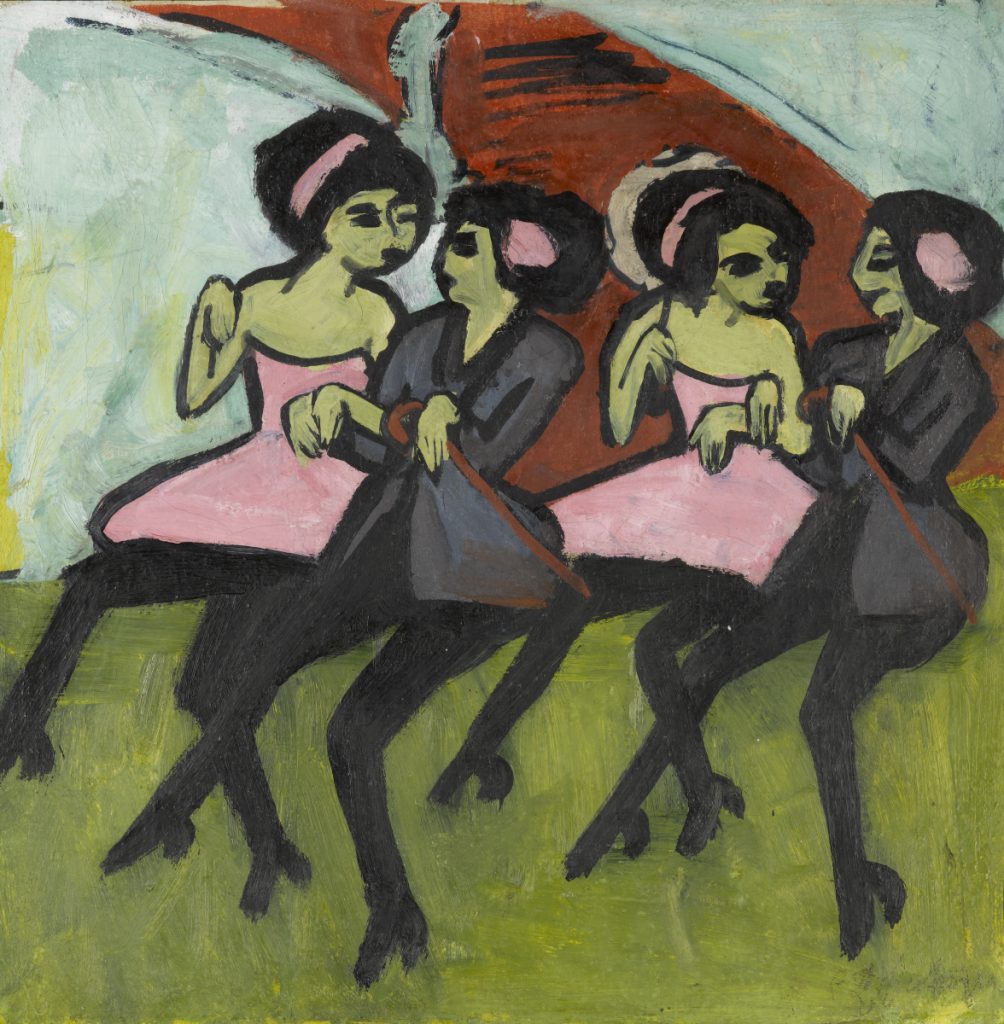Panama Dancers (work of art)
Artwork Info
Key Ideas
- This painting features a bold, colorful depiction of four female figures on stage performing the “cakewalk,” a pre-Civil War dance that was historically done by enslaved Black people to mock the plantation owners. This popular dance involved pairs of dancers leaning back and kicking up their legs in a prancing movement.
- The performance in this painting has been identified as a vaudeville show by an African-American dance troupe that toured Europe in the early 1900s.
- Artist Ernst Ludwig Kirchner used the cakewalk dance in this painting to represent personal freedom. Kirchner was one of the founders of the German expressionism movement, in which artists showed their emotions and often made social commentaries in their artwork.
Learn More
The dancers in this painting represent members of an African-American dance troupe that toured Europe performing vaudeville shows in the early 20th century. Vaudeville was a popular type of entertainment that featured a variety of specialty acts such as comedy, singing, and dancing. In Panama Dancers the four female figures are depicted in pairs, strutting arm in arm as they perform the cakewalk, a dance that was popular in the early 1900s. The cakewalk was a pre-Civil War dance originally performed by enslaved Black people on plantation grounds. The dance involved pairs of people leaning back and kicking up their legs in a prancing movement that mocked the attitudes and behaviors of plantation owners.
Artist Ernst Ludwig Kirchner was one of the founders of the German expressionist art movement, which began in Germany before World War I. Expressionist artists communicated their true feelings in their work and often used their art to protest social and political issues of the time. When the Nazis took control of Germany in the 1930s, they considered much of modern expressionist art “degenerate,” or shameful and immoral. The Nazis took, sold, and destroyed tens of thousands of works of art, including more than 600 works by Kirchner.
The name “Panama” in the title of this work is a reference to the Panama Canal, which was under construction when the painting was created.
Additional Resources
Resources for Teachers:
- Read an article about the cakewalk dance and its origins.
- Read an article about Aida Overton Walker, an influential Black dancer known as “Queen of the Cakewalk.”
- Explore other works by Ernst Ludwig Kirchner.
Resources for Students:
- Watch a video of the cakewalk dance from the early 1900s.
- Watch a video about expressing emotions through art.

